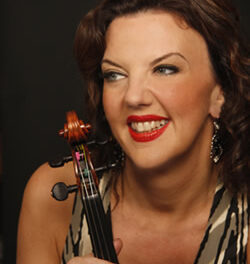What is the future of contemporary classical music, and how do we define its present? These are just some of the questions that two contemporary chamber music groups, the JACK Quartet and yMusic, aim to answer. It was both delightful and intriguing that these two ensembles were featured together, in a double-bill concert, as a part of the Duke Performances series. Both the JACK Quartet and yMusic have a close relationship with the music department at the University – the latter served a residency in 2015, and the former is just finishing up a two-year residency this school year. These are two of the world’s premiere new music ensembles, and with their dedication to supporting and performing new composers, they are redefining what 21st century chamber music is and can be.
The JACK Quartet took the first half of the concert. This string quartet – violinists Christopher Otto and Austin Wulliman, violist John Pickford Richards, and cellist Jay Campbell – is not only a performing group but also a nonprofit with specific projects dedicated to commissioning music from the newest, most promising composers. The ideas of meditation and mindfulness seemed to feature heavily, connecting the three pieces they played. (JACK Quartet bios can be read here.)
Canadian composer Zosha Di Castri‘s String Quartet No. 1 began with nervous, skittish patterns in all four instruments. Because this piece (like the two after it) was entirely ametric, it was fascinating to watch the intense communication among the quartet. yMusic’s flutist Alex Sopp joined the Quartet for John Zorn‘s Nachtraglichkeit (translation – the term “afterwardsness,” a concept theorized by Freud), holding at least scraps of melody in the flute among chaotic and scattered pizzicato. Among this suspense, there were moments of togetherness, such as when a tremolo in the cello was united with flutters in the flute.
Similar to the previous two pieces but also entirely different, Tyshawn Sorey‘s Everything Changes, Nothing Changes is exemplary of its name because its quiet, repetitive phrases conceal the fact that each carefully tuned cluster is distinct. To emphasize the meditative nature of this piece that almost seemed to encourage the audience’s minds to wander, the Quartet used no spotlights, opting instead for blue ambient light onstage. This music was completely about the atmospheric and sensory experience, rather than melody or form.
yMusic markets themselves as a fusion of genres, pushing the boundaries of what might be assumed considering their instrumentation. As a result, the six members – clarinetist Hideaki Aomori, cellist Gabriel Cabezas, trumpeter CJ Camerieri, violinist Rob Moose, violist Nadia Sirota, and flutist Sopp – have a wide variety of collaborations and commissions under their belt.
Two imaginative works by young composer Gabriella Smith were featured on yMusic’s program: “Tessellations” and “Maré.” Both are zesty and full of movement, and are familiarly tonal despite a cacophonous texture.
nested forms by JP Merz showcased yMusic’s skillful sense of balance in a tapestry of contrasting motifs in each instrument.
Surprisingly, Siorta announced after the performance of yMusic’s originals “Cribbea” and “Peter Inn” that this concert was the premiere performance of these pieces. These two short and delicate tone poems were delightfully played with some unconventional techniques. In both, Moose played his violin like a guitar in a syncopated strumming pattern. For “Peter Inn,” Aomori and Camerieri traded their first instruments for bass clarinet and French horn respectively, playing a languid upward motif along with Sopp.
yMusic’s set concluded with a medley of Sufjan Stevens‘ “Year of the Horse” leading into “Their Stenciled Breath” by Caroline Shaw (a movement from an earlier commission). This performance was full of bright harmony and light, and was a lovely end to the concert.
The future direction of modern classical music may be uncertain, but ensembles like the JACK Quartet and yMusic are essential to bringing the genre to life and connecting with upcoming composers who deserve recognition. From the outside, the compositions they played seem to push the envelope of form and tonality, but they really reflect a deeper desire for understanding of music and its effect on an audience.











